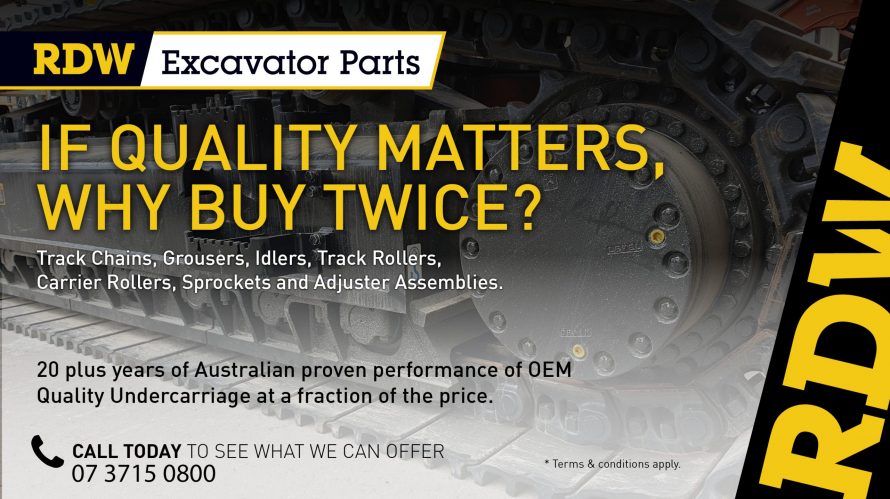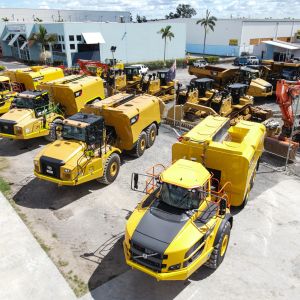
In more ways than one, there is a lot riding on an excavator’s undercarriage, so preventative maintenance is the key.
Good routine maintenance keeps the overall cost of ownership down. It extends the life of the wearing parts of the machine, such as sprockets, idlers and track groups.
The moving components of the undercarriage are wear-items, meaning they are expected to wear over time in the process of doing their job. The bottom rollers carry the weight of the machine while it is traveling and digging. The front idler holds the track chain in alignment while the machine is traveling, and the recoil spring acts as a shock absorber.
The upper rollers carry the chain, keep it in alignment and are high enough to allow debris to fall from the chain, so it is kept relatively clean. The drive sprocket engages the track chain and propels the machine by pulling the chain over the sprocket.
All these components wear out over time, though with routine maintenance and normal use, their life should be reasonably long. With poor maintenance and rough operation, their life expectancy will be far less.
The undercarriage can represent a significant portion of the operating costs for an excavator. Proper maintenance will help extend undercarriage life and lower operating costs by keeping the excavator on the jobsite moving material.
All components are designed to wear at roughly the same rate. If you have one component that is damaged or worn more than others, it will increase overall wear and shorten the life of all related components. The most often noted example is a failed bottom roller that will not turn. As the machine travels, the chain is dragged across this seized roller, wearing flat areas on the bottom. This wear is reflected on the chain surface and increases friction, which increases wear on the chain pins, bushings, sprockets, and idlers. For one seized roller, all components suffer and have a shorter life.




